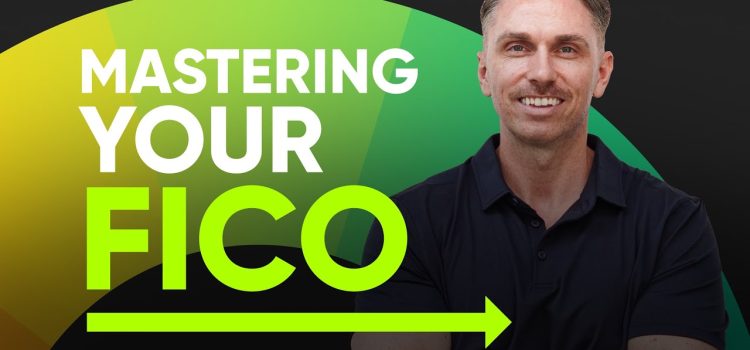
Introduction
Your FICO score can feel like a magic number that decides if you get a loan, a credit card, or the best interest rate. A low score can hold you back. But a poor FICO score is not forever. With the right steps, you can go from zero to hero and open new doors. In this guide, we’ll walk through simple, clear actions you can take today to start transforming your FICO score—from understanding what affects it to long-term habits that keep it high.
What Is a FICO Score and Why It Matters
A FICO score is a three-digit number between 300 and 850. Lenders use it to judge your creditworthiness:
- 300–579: Poor
- 580–669: Fair
- 670–739: Good
- 740–799: Very Good
- 800–850: Exceptional
A higher score means lower interest rates, better credit card perks, and easier loan approvals. Improving your FICO score can save you thousands in interest and give you more financial freedom.
The Five Key Factors That Affect Your FICO Score
Understanding the factors lets you focus your efforts:
-
Payment History (35%): Paying bills on time is the most important factor. Late or missed payments hurt your score.
-
Credit Utilization (30%): This is the ratio of your credit card balances to your credit limits. Aim to use less than 30% of your limit.
-
Length of Credit History (15%): The longer your account history, the better. Older accounts boost this factor.
-
Credit Mix (10%): A mix of credit types—credit cards, installment loans, mortgages—shows lenders you manage different debts responsibly.
-
New Credit (10%): Opening many new accounts in a short time can lower your score. Each application causes a small, temporary dip.
Step 1: Check Your Credit Reports for Errors
Before you start, get copies of your reports from Equifax, Experian, and TransUnion at AnnualCreditReport.com. Look for:
- Incorrect personal information (name, address)
- Accounts that aren’t yours
- Duplicate accounts
- Wrong late payments
To dispute errors:
- Write to the credit bureau explaining the mistake.
- Include copies of supporting documents.
- The bureau has 30 days to investigate and correct errors.
Fixing mistakes can boost your score quickly, often by 20–100 points.
Step 2: Always Pay on Time
Since payment history counts for 35%, on-time payments are crucial. Tips to stay current:
- Auto-Pay: Set up automatic payments for the minimum due.
- Calendar Alerts: Use your phone’s reminder feature.
- Consolidate Due Dates: Ask for aligned payment dates.
Even one missed payment can drop your score by dozens of points. Consistent on-time payments build a solid record.
Step 3: Lower Your Credit Utilization
High balances hurt your score. Here’s how to bring utilization below 30%:
- Pay Down Balances: Focus first on cards closest to their limit.
- Request a Credit Limit Increase: If your spending stays the same, utilization falls.
- Spread Balances: Move debt from a maxed card to one with available limit.
- Track Daily Balances: Some issuers report your balance mid-cycle; keep it low then.
Lower utilization shows you handle credit responsibly and often raises your score.
Step 4: Build a Lengthy, Positive Credit History
Age of accounts matters. To lengthen your history:
- Keep Old Accounts Open: Don’t close unused cards with no annual fee.
- Use Them Occasionally: A small monthly charge keeps them active.
- Become an Authorized User: Join a trusted family member’s account; their history boosts yours.
These steps help show lenders you’ve managed credit over time.
Step 5: Diversify Your Credit Mix
A varied credit portfolio can improve your score. Consider:
- Installment Loans: Auto loan, personal loan, or student loan.
- Secured Credit Card: Good for those rebuilding credit.
- Retail Store Cards: Use sparingly and pay in full.
Only take on credit you need and can manage. Responsible handling of multiple types proves your creditworthiness.
Step 6: Be Careful with New Credit Applications
Assume each hard inquiry cuts your score by 5–10 points. Strategies to minimize impact:
- Rate Shopping Windows: Multiple auto loan inquiries in 14 days count as one.
- Pre-Qualification: Use soft inquiries to check your chances first.
- Space Out Applications: Wait at least six months between major credit requests.
Mindful applications protect your score while you seek better loan terms.
Step 7: Use Debt Payoff Strategies
Reducing existing debt raises your FICO score. Two popular methods:
- Debt Snowball: Pay off smallest balances first for quick wins.
- Debt Avalanche: Tackle highest-interest debts first to save money.
Choose the method that keeps you motivated. Every balance you zero out reduces your utilization and boosts your score.
Step 8: Add Positive Data with Experian Boost™
If you have utility or phone bills on time, Experian Boost™ lets you add that to your Experian report. This can lift your FICO score instantly by a few points. Link your bank account, authorize data access, and watch your score rise.
Step 9: Monitor Your Progress
Regularly check your score and report:
- Use free services like Credit Karma or your bank’s credit tracker.
- Sign up for alerts on changes to your report.
- Review monthly statements for errors or fraud.
Monitoring keeps you focused and lets you celebrate milestones as your score climbs.
Step 10: Be Patient and Consistent
Improving a FICO score takes time. Late payments stay on your report for seven years, though their impact lessens over time. Consistency in payments, low utilization, and long-term account maintenance gradually move your score from “poor” to “hero.” Aim for small, steady progress—5 to 10 points a month—until you reach your goal.
Common Pitfalls to Avoid
- Ignoring Small Charges: Unpaid late fees and small debts can lead to collections.
- Closing Old Accounts: This may shorten your credit history and raise utilization.
- Overusing New Credit: Racking up multiple new cards can signal risk to lenders.
- Missing Monitoring: Errors and fraud can slip by unnoticed without regular checks.
Being aware of these traps helps you maintain a rising trajectory.
Real-Life Success Stories
- Sarah’s Story: Started at 520. Paid off two credit cards with debt snowball, set auto-pay, and used Experian Boost™. Score reached 700 in 12 months.
- Mike’s Journey: Began at 580 after a divorce. Kept his oldest card open, added a secured card for small monthly bills, and disputed two errors. Score climbed to 720 in eight months.
Their discipline and smart choices show that anyone can transform their FICO score with the right steps.
Visual Table for Key Points:
| Key Points | Description |
|---|---|
| Understanding Your FICO Score | Learn about the components and significance of your FICO score. |
| Assessing Your Current Situation | Analyze your credit report and identify areas for improvement. |
| Creating a Game Plan | Develop a strategic plan tailored to your financial goals. |
| Managing Your Credit Responsibly | Adopt responsible credit management practices. |
| Paying Off Debt Strategically | Prioritize debt repayment to improve your credit utilization ratio. |
| Building Positive Credit History | Establish and maintain positive credit habits. |
| Monitoring and Maintaining Progress | Regularly monitor your credit score and track your progress. |
| Expert Advice from Dr. Carter | Benefit from expert insights and practical tips for improving your FICO score. |
Comparative Table:
| Strategies | Benefits |
|---|---|
| Timely Payments | Improves payment history and boosts credit score. |
| Debt Repayment | Reduces overall debt load and improves credit utilization. |
| Diversified Credit Portfolio | Establishes positive credit history and enhances credit mix. |
| Regular Monitoring | Identifies errors and areas for improvement promptly. |
Conclusion:
Your FICO score plays a crucial role in your financial well-being, influencing your ability to access credit and secure favorable terms on loans and mortgages. By following the expert advice provided by Dr. Emily Carter and implementing practical strategies outlined in this article, you can take control of your financial destiny and transform your credit score from zero to hero. Remember, consistency and discipline are key, so stay committed to your financial goals and watch your credit score soar.










